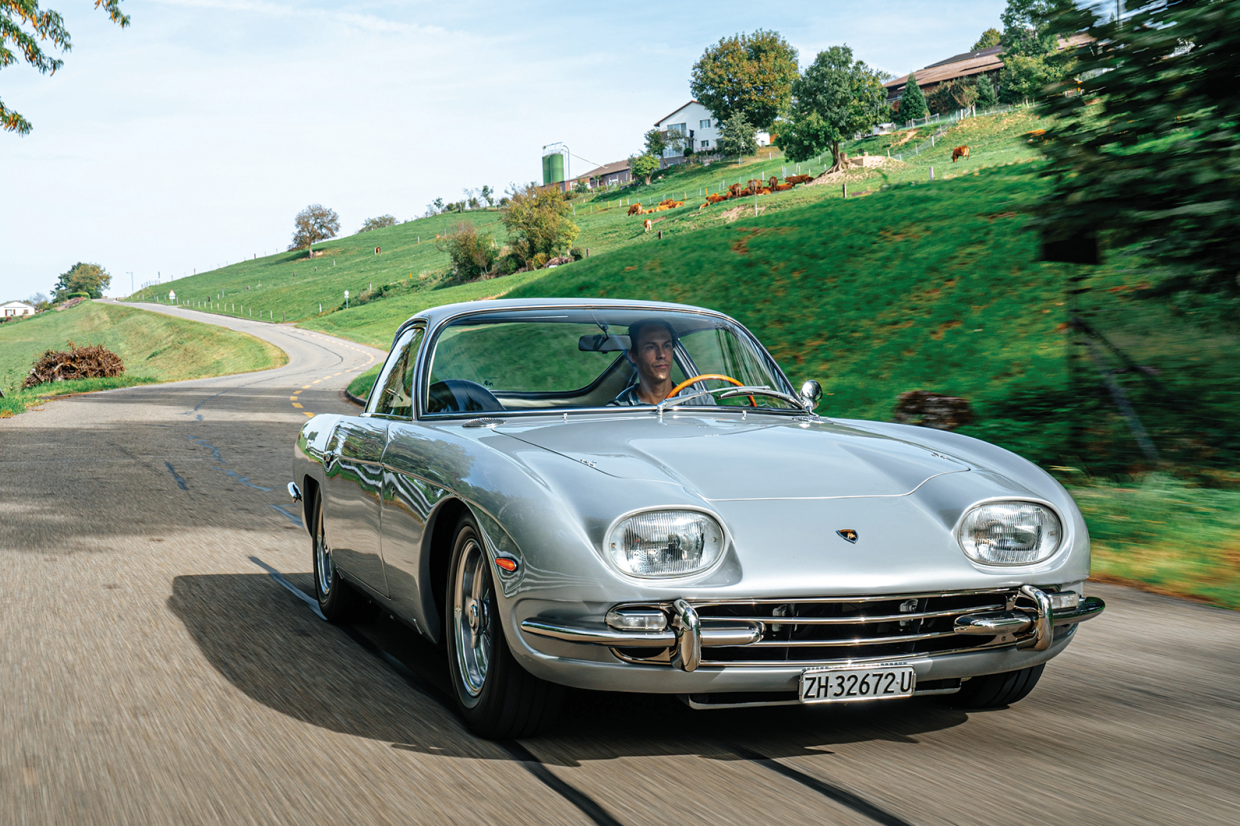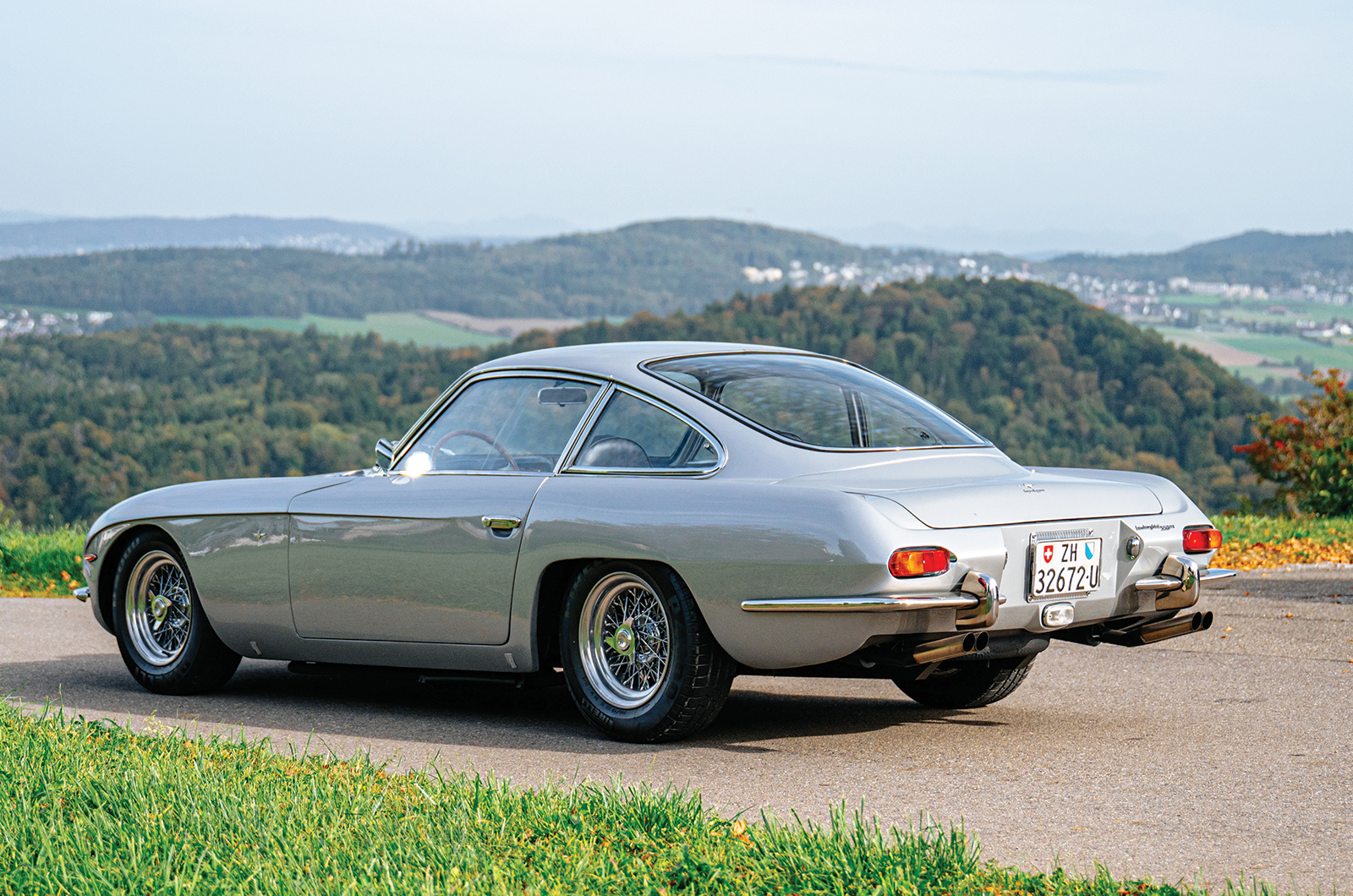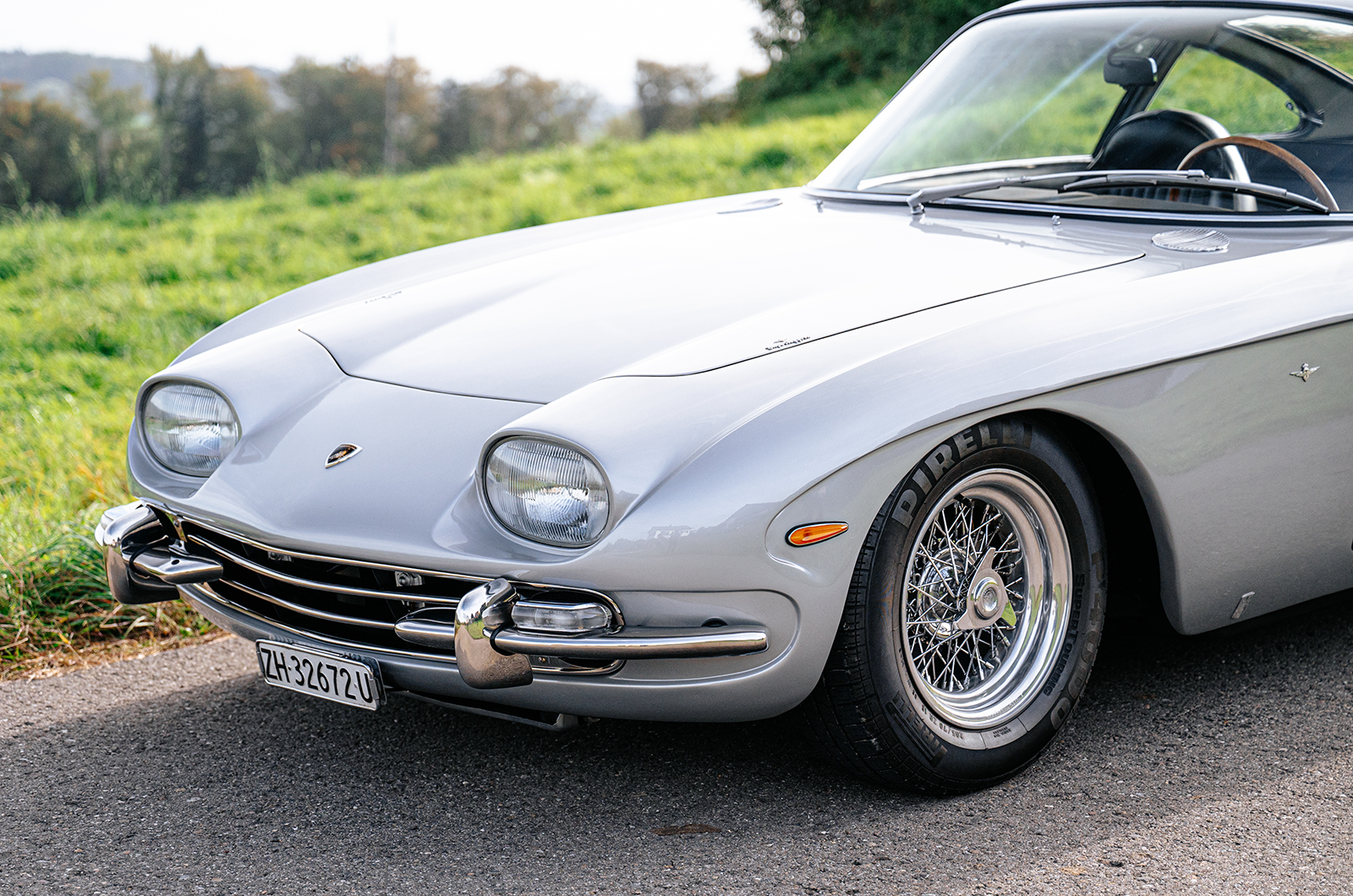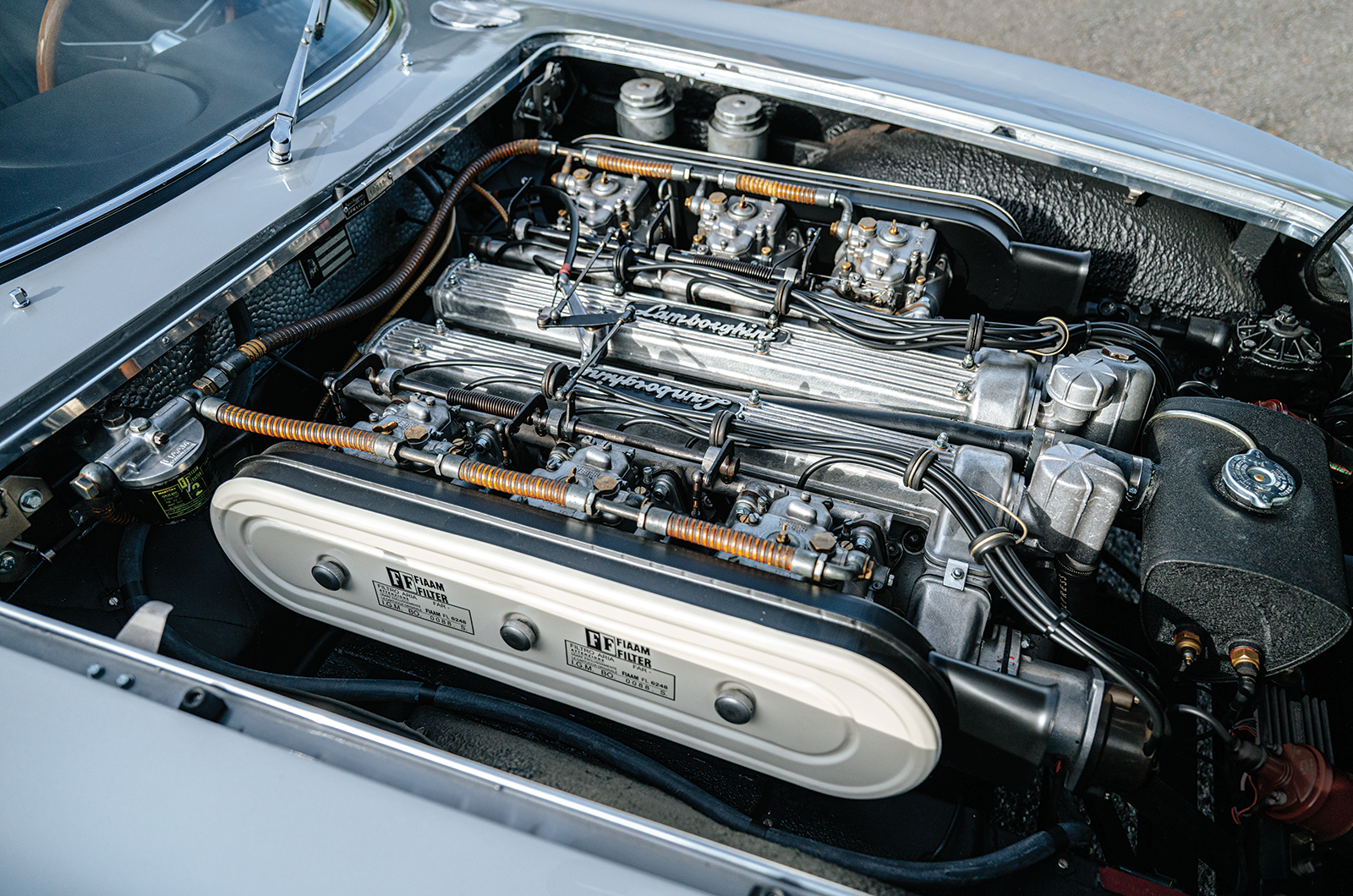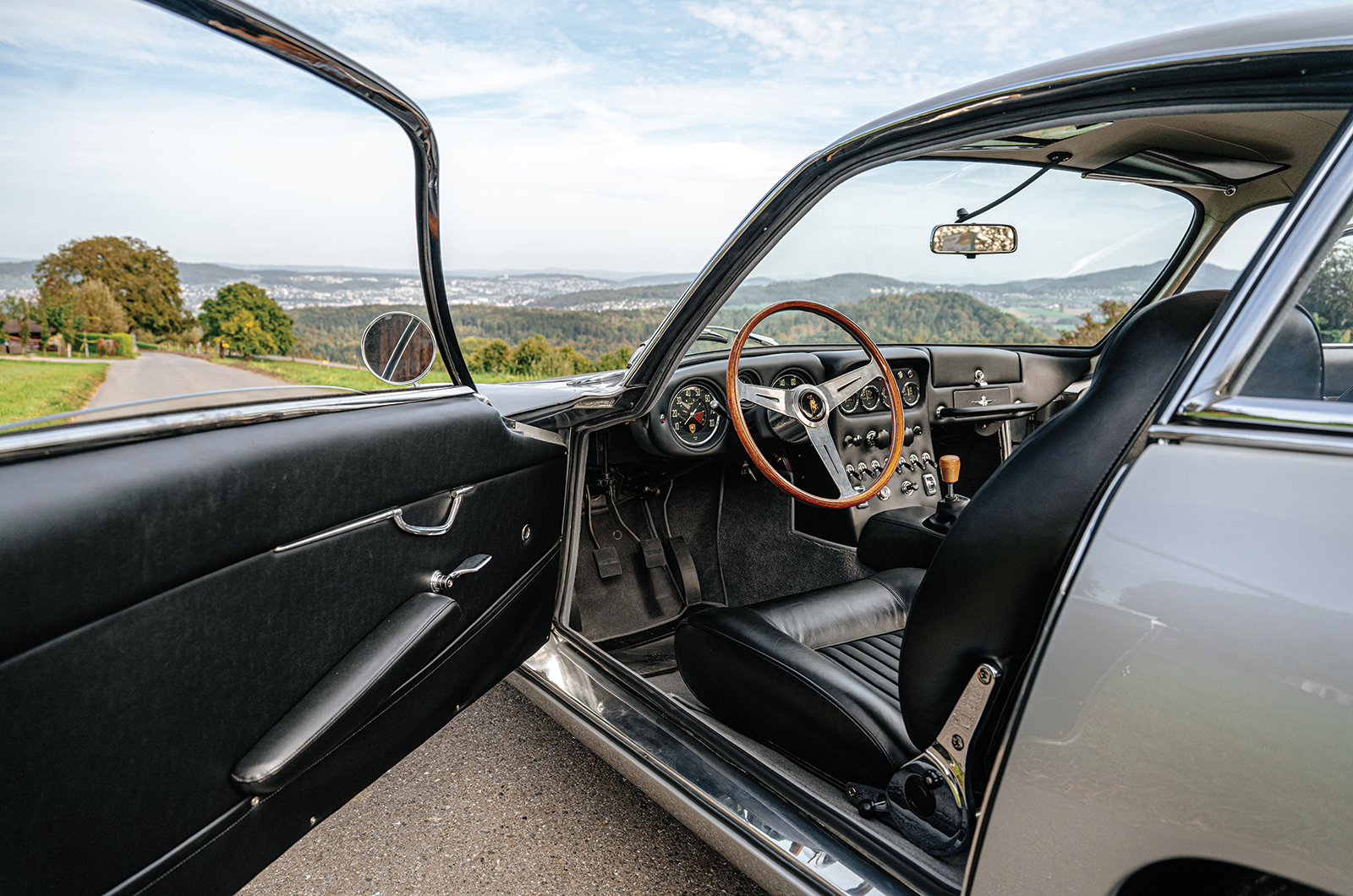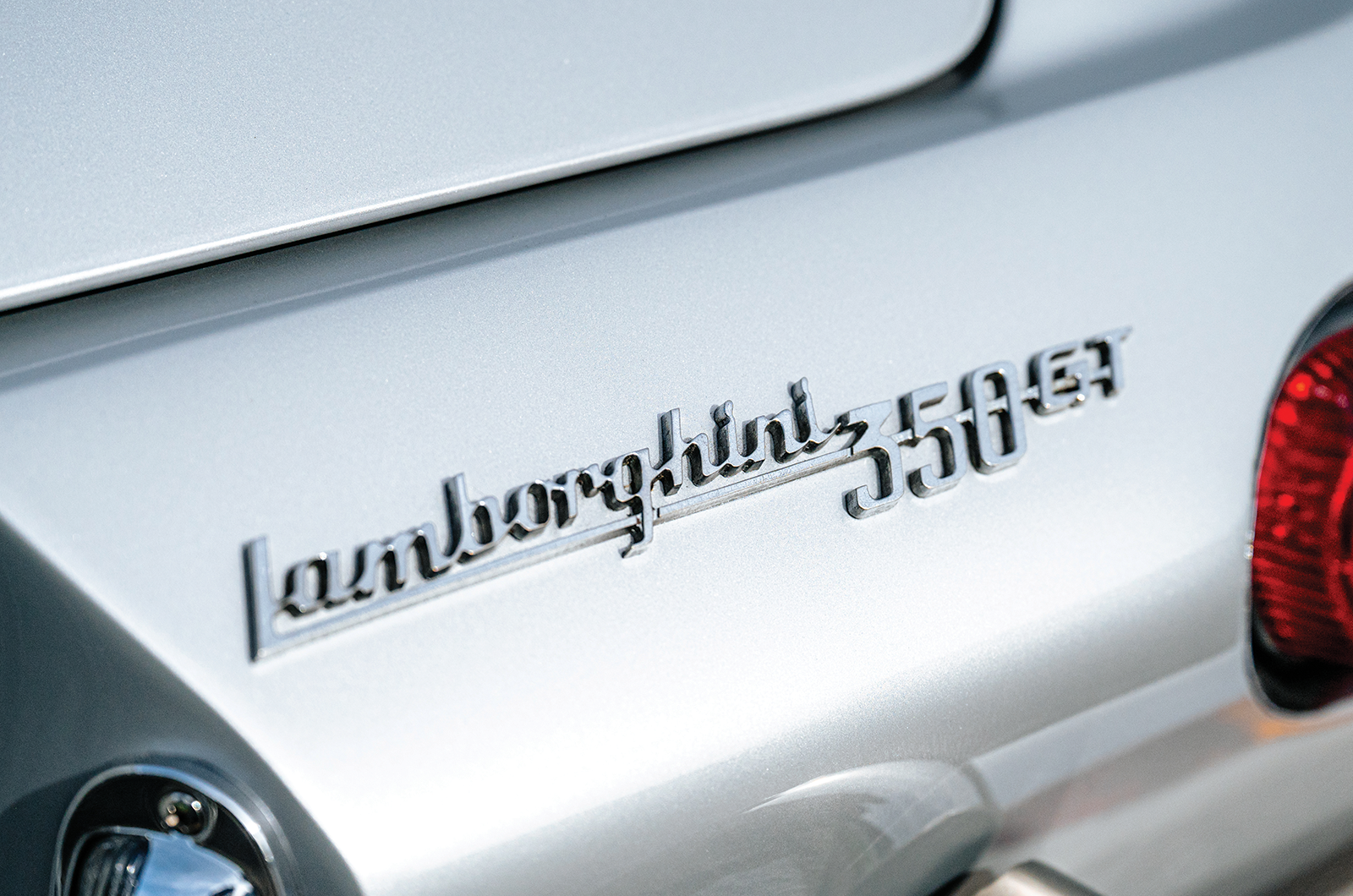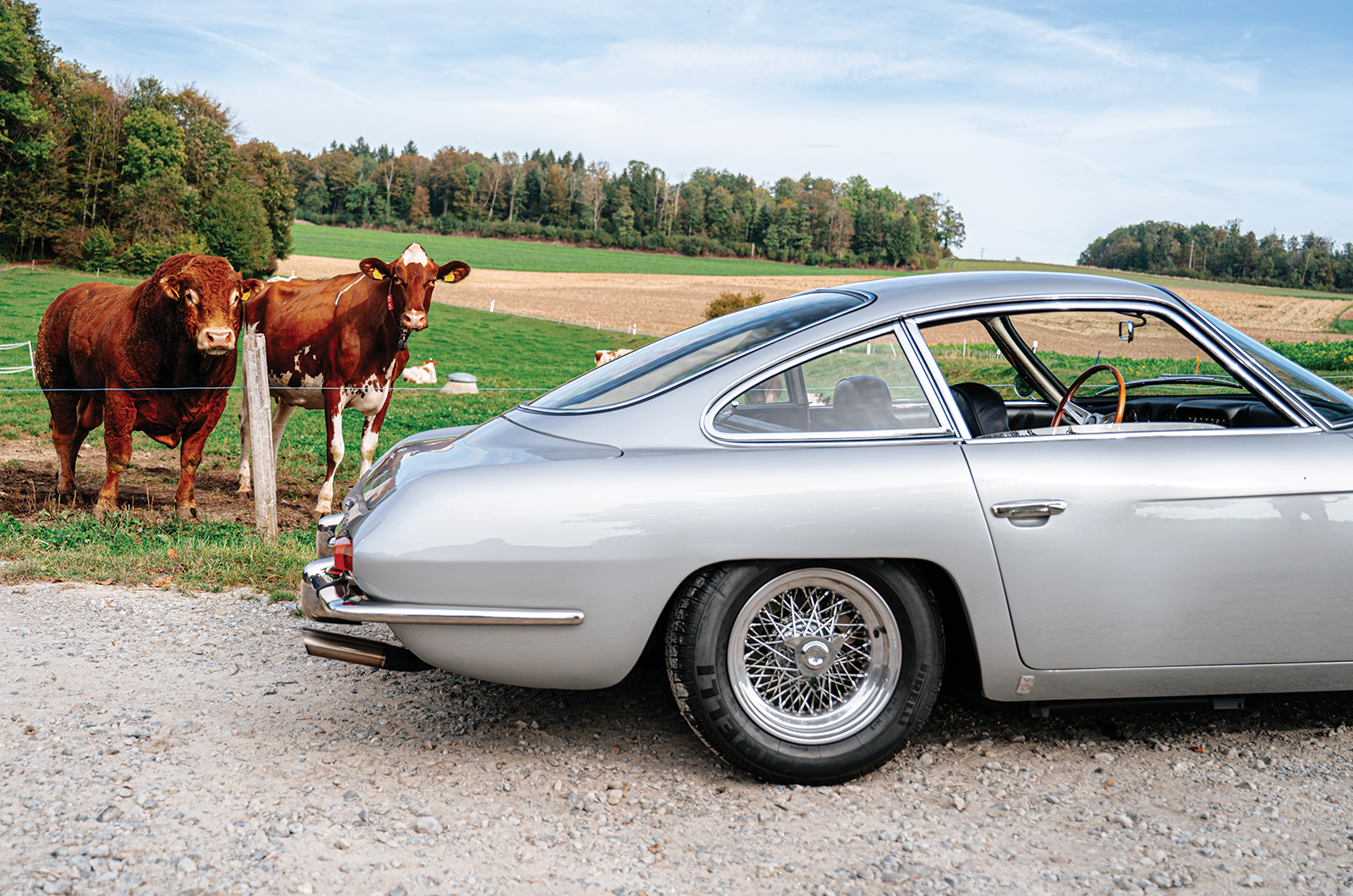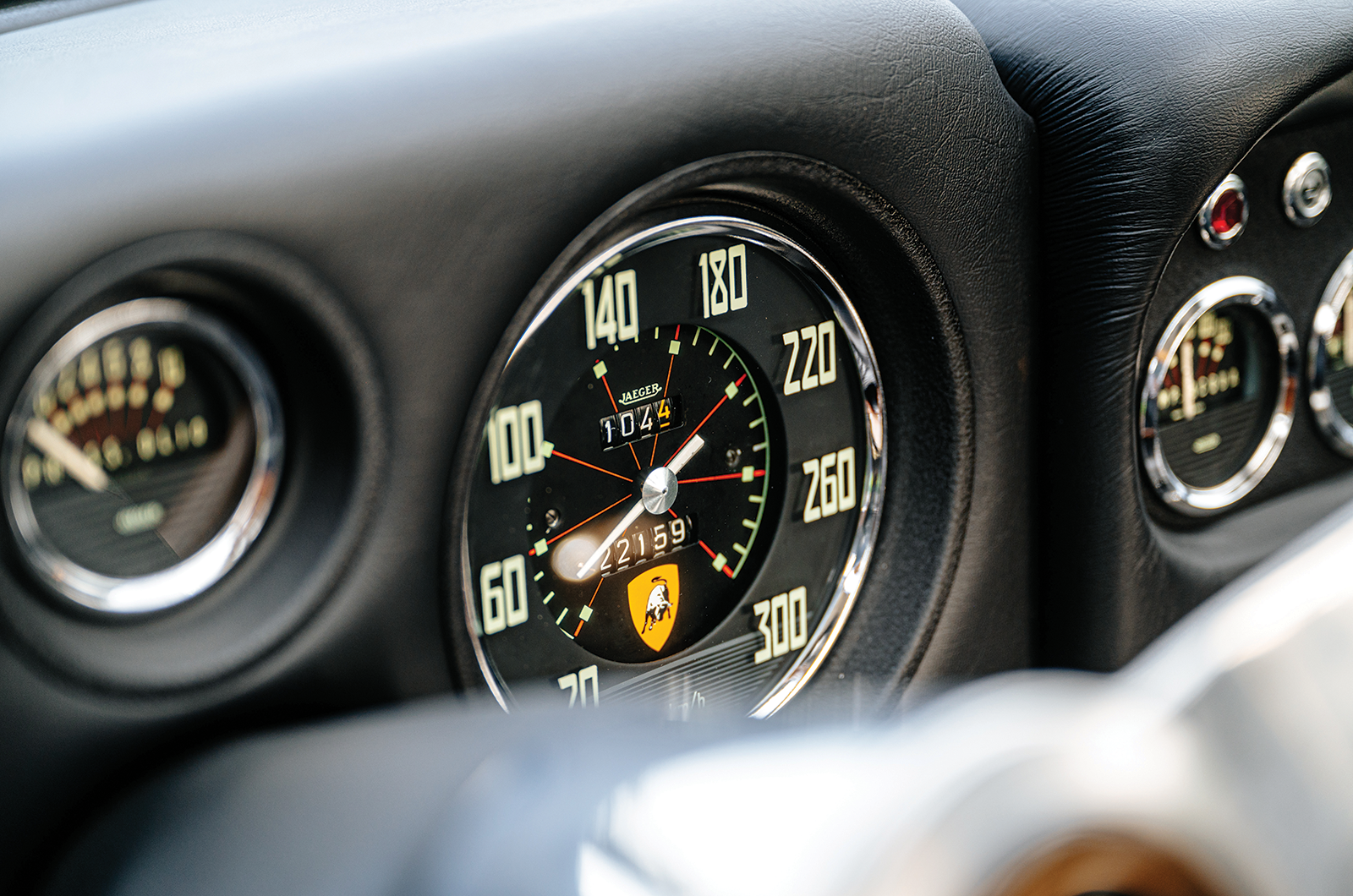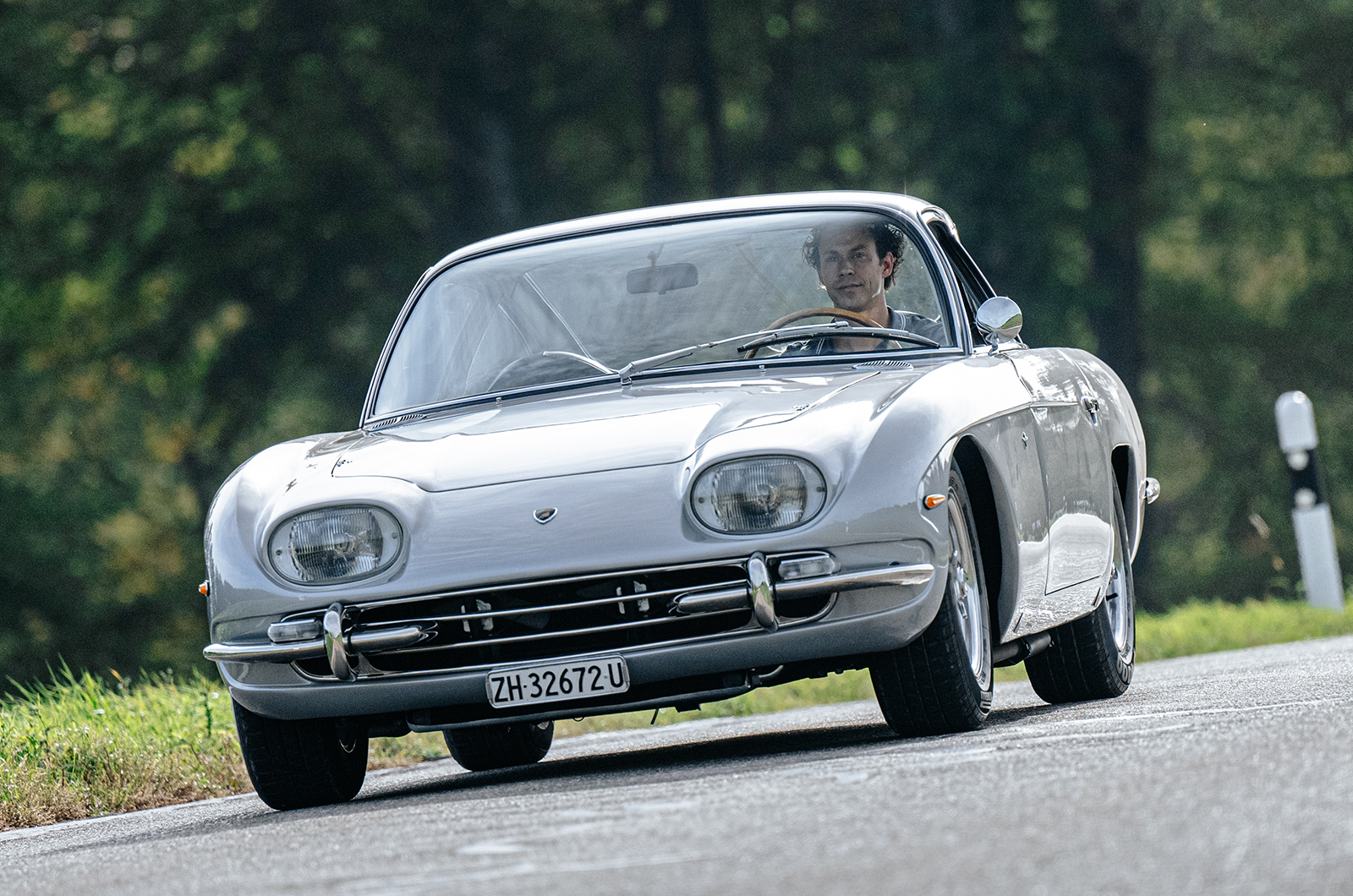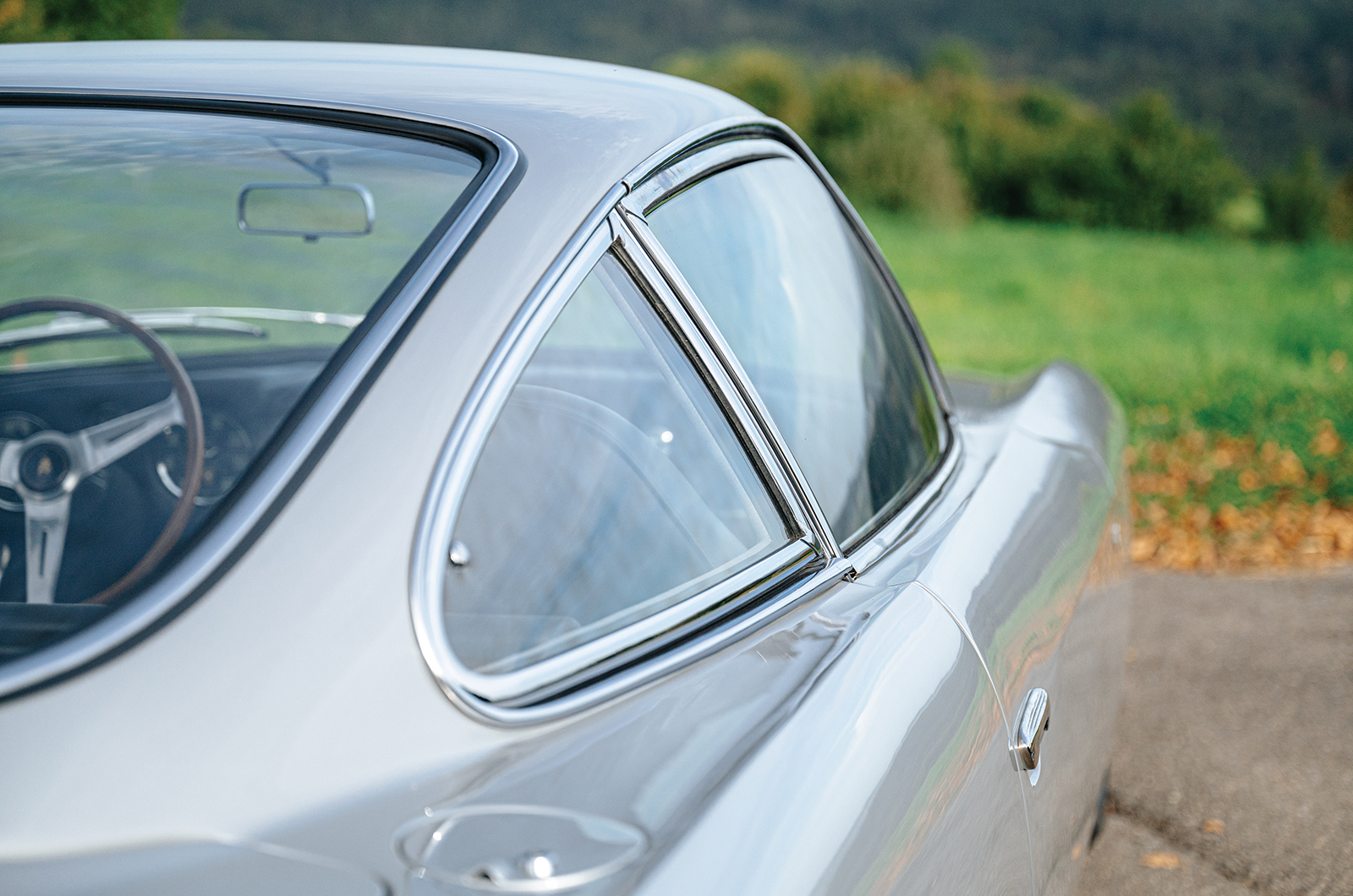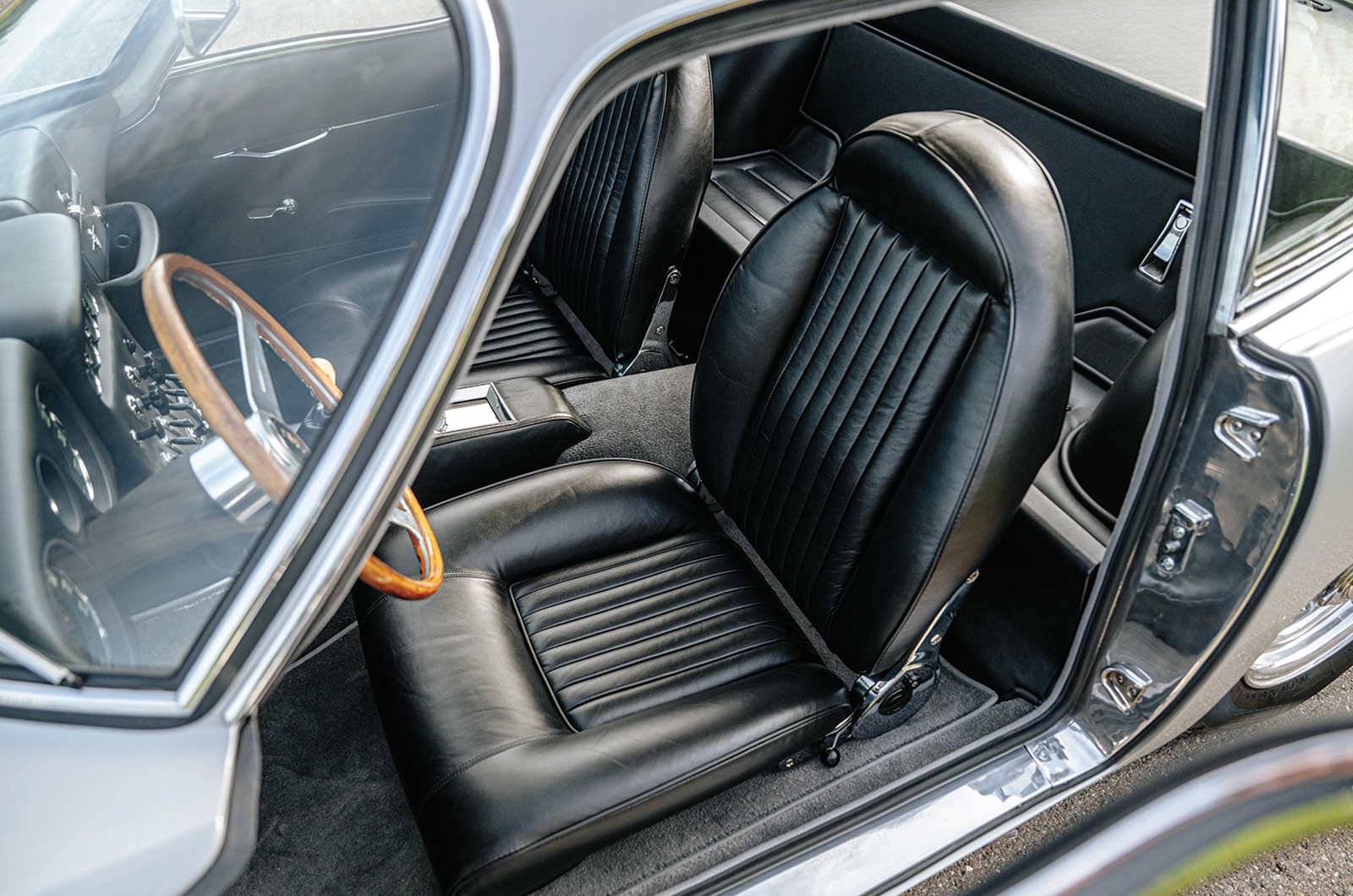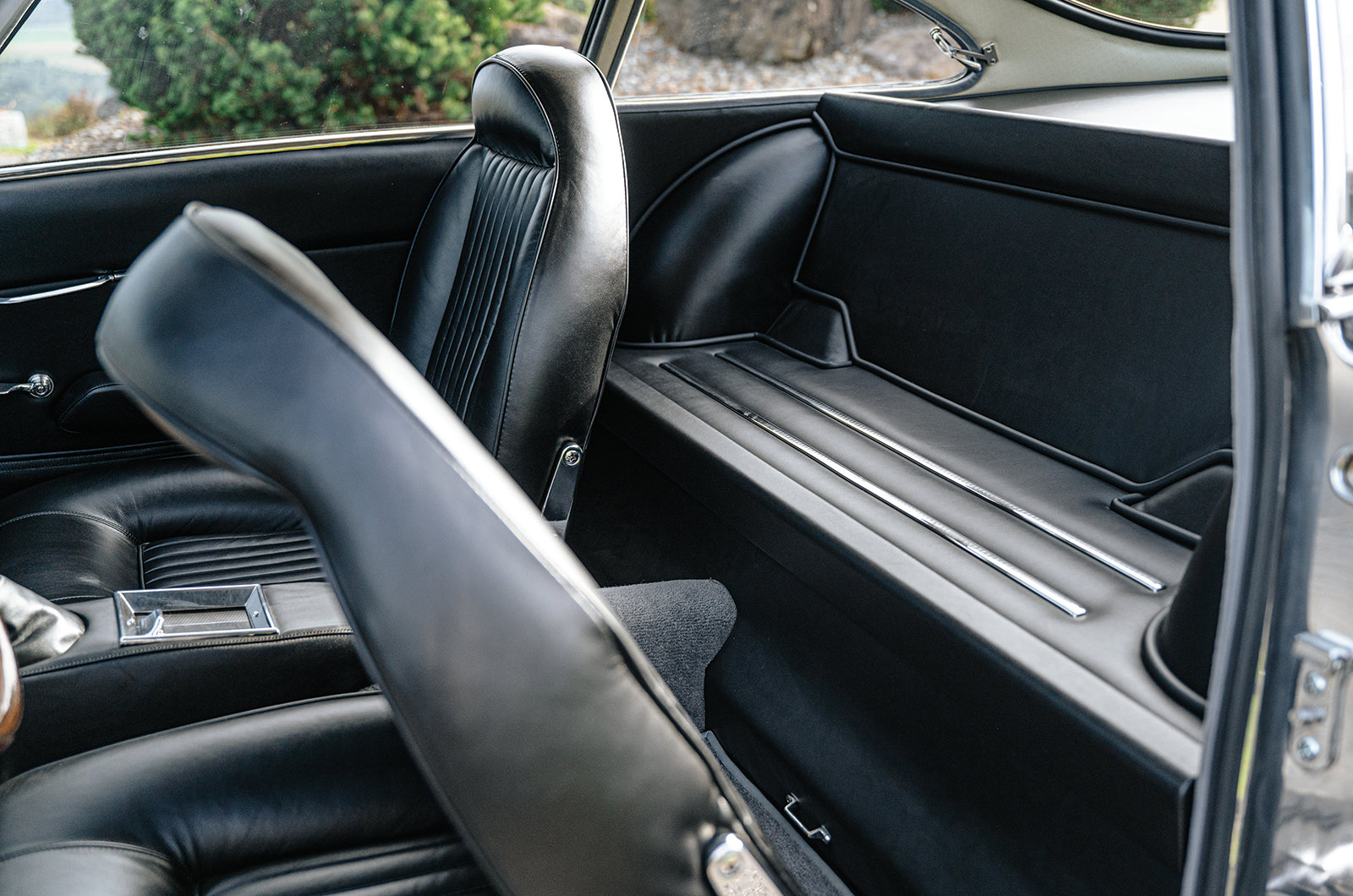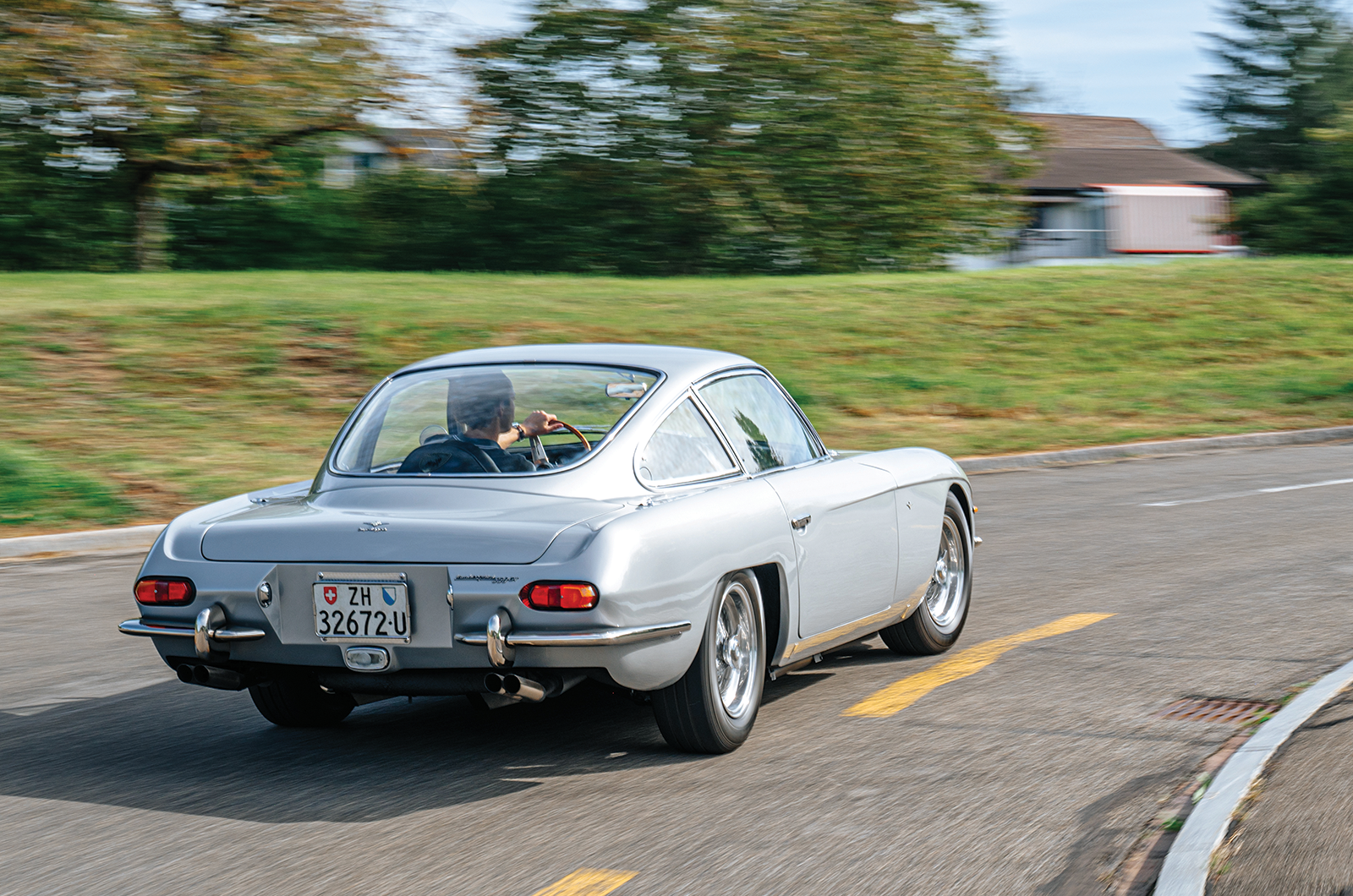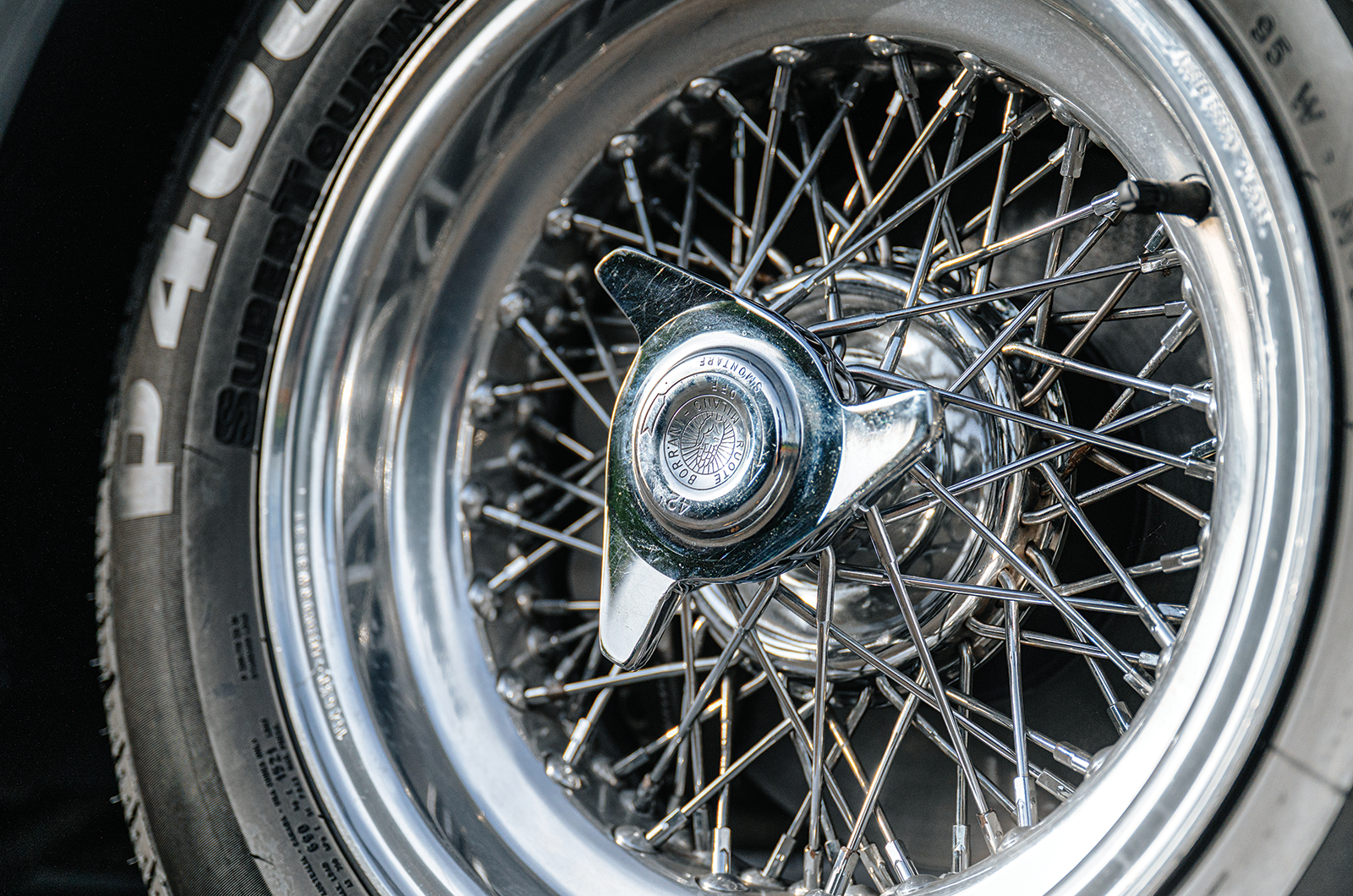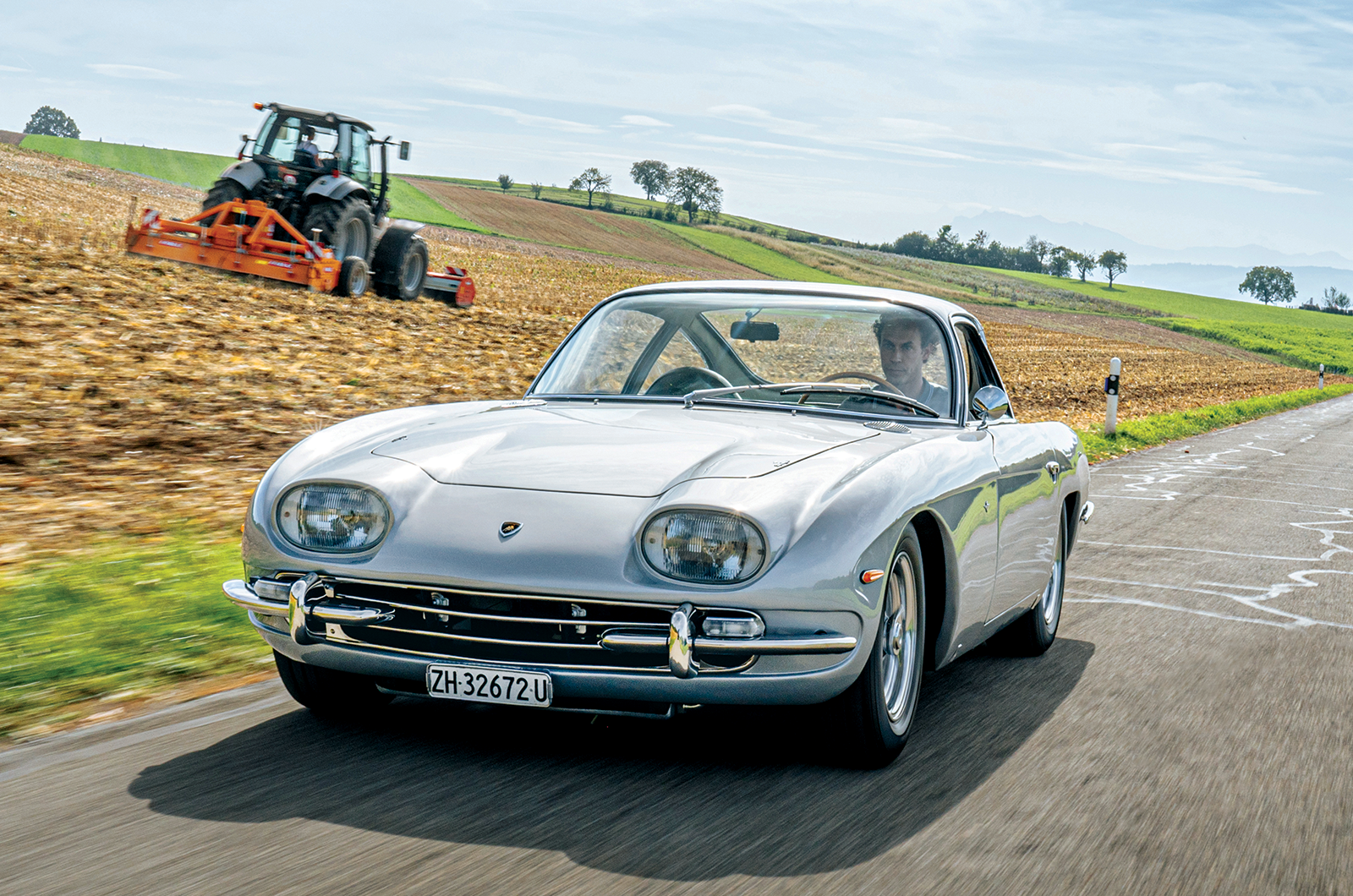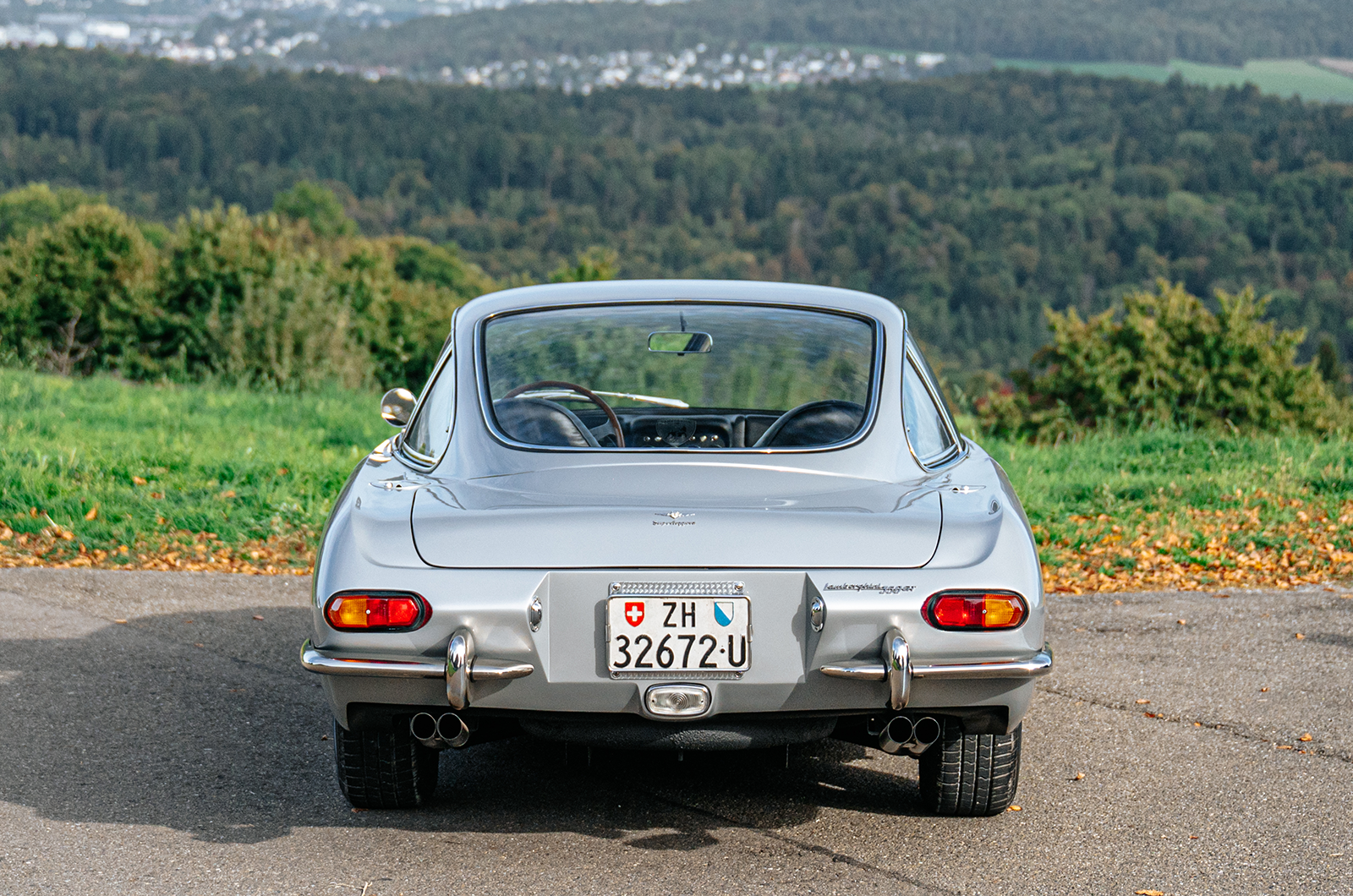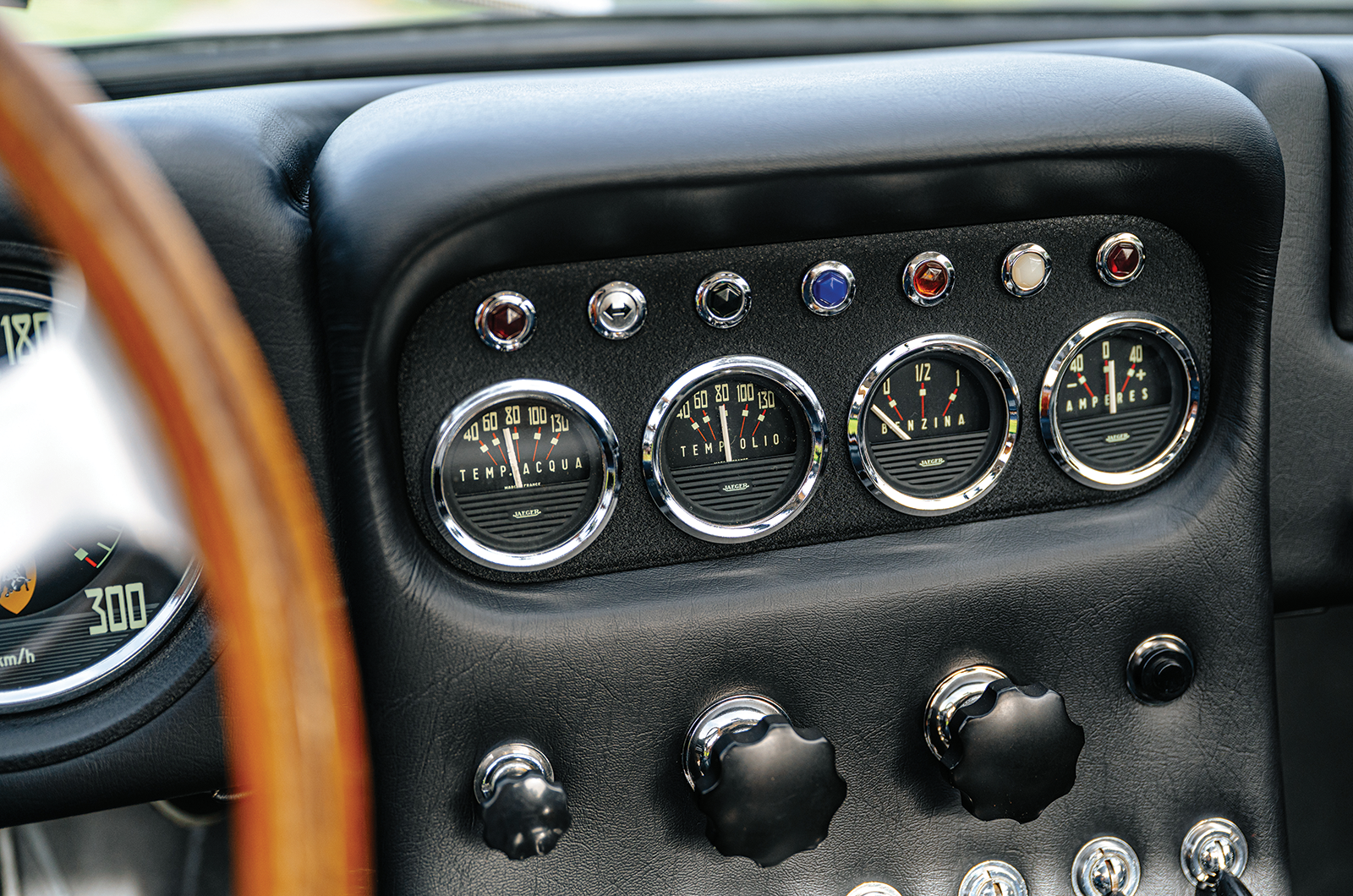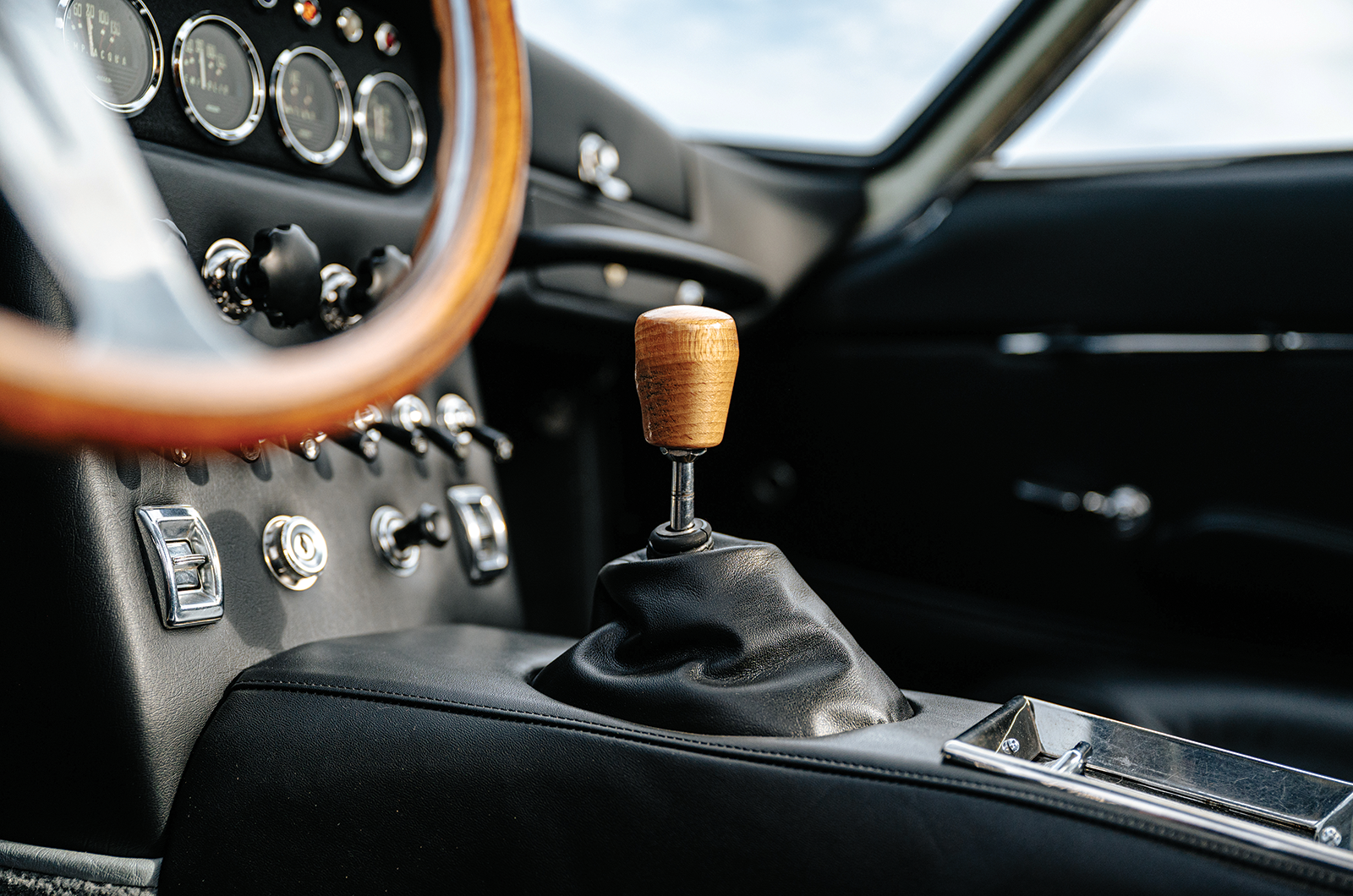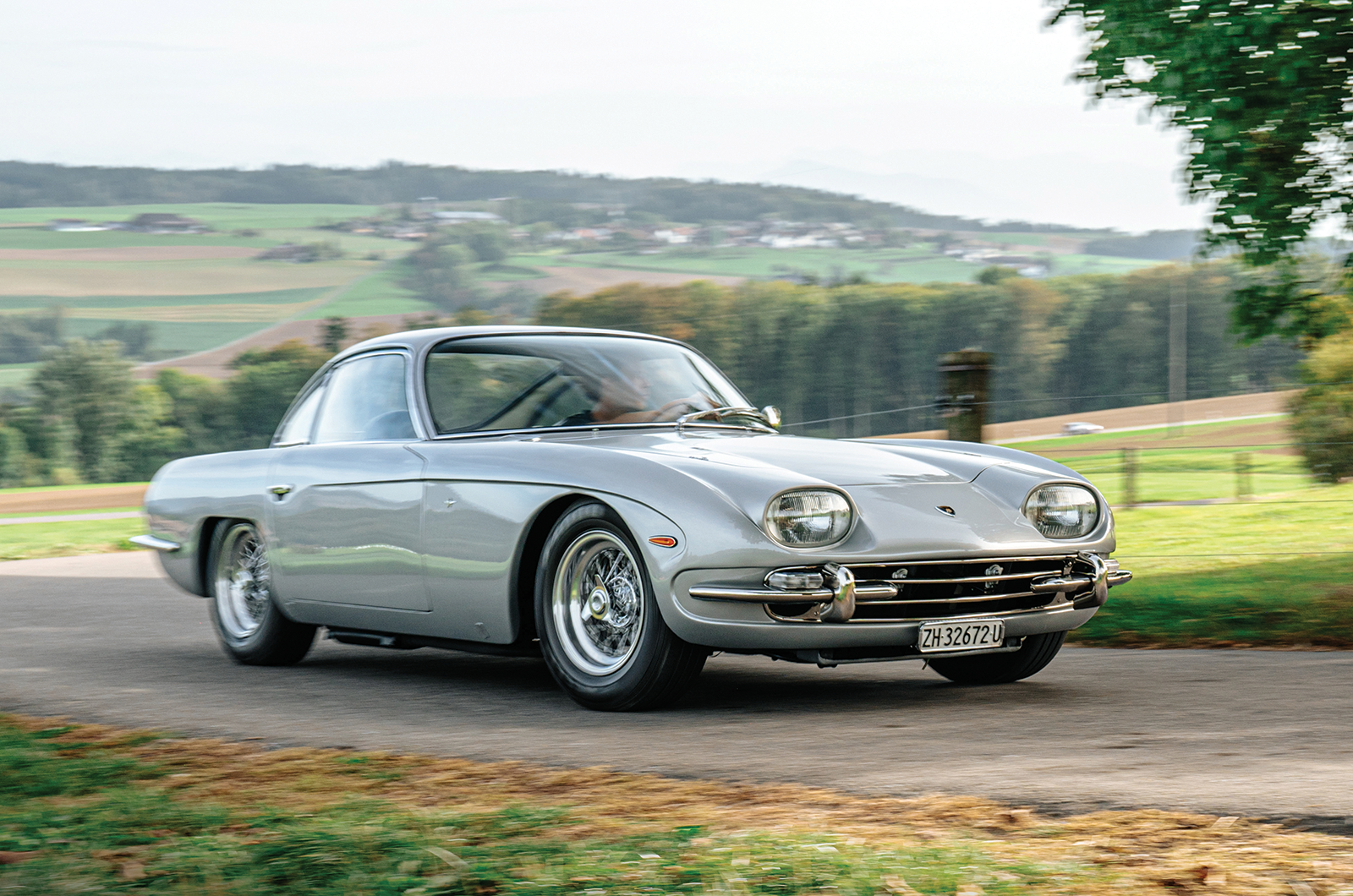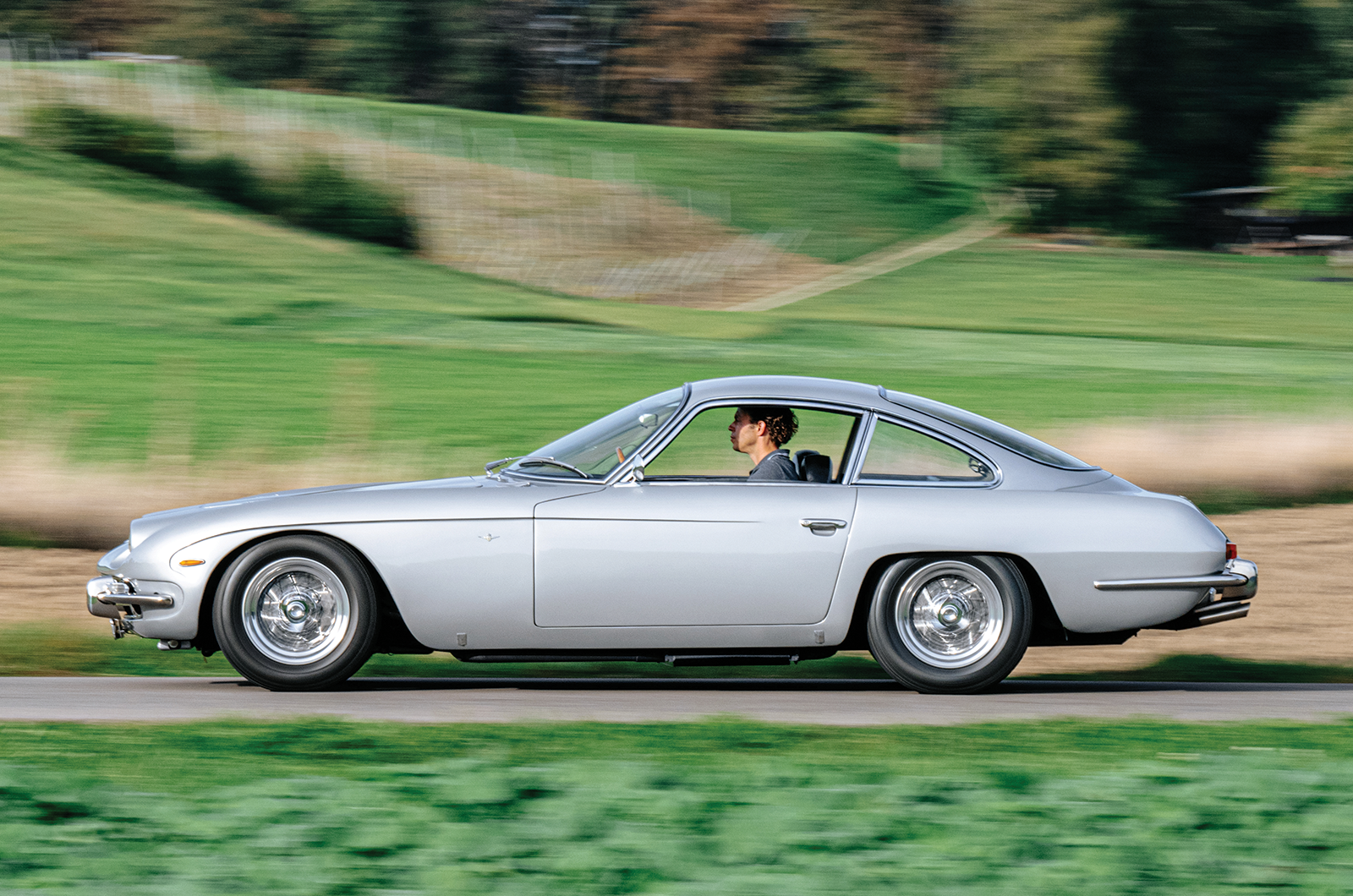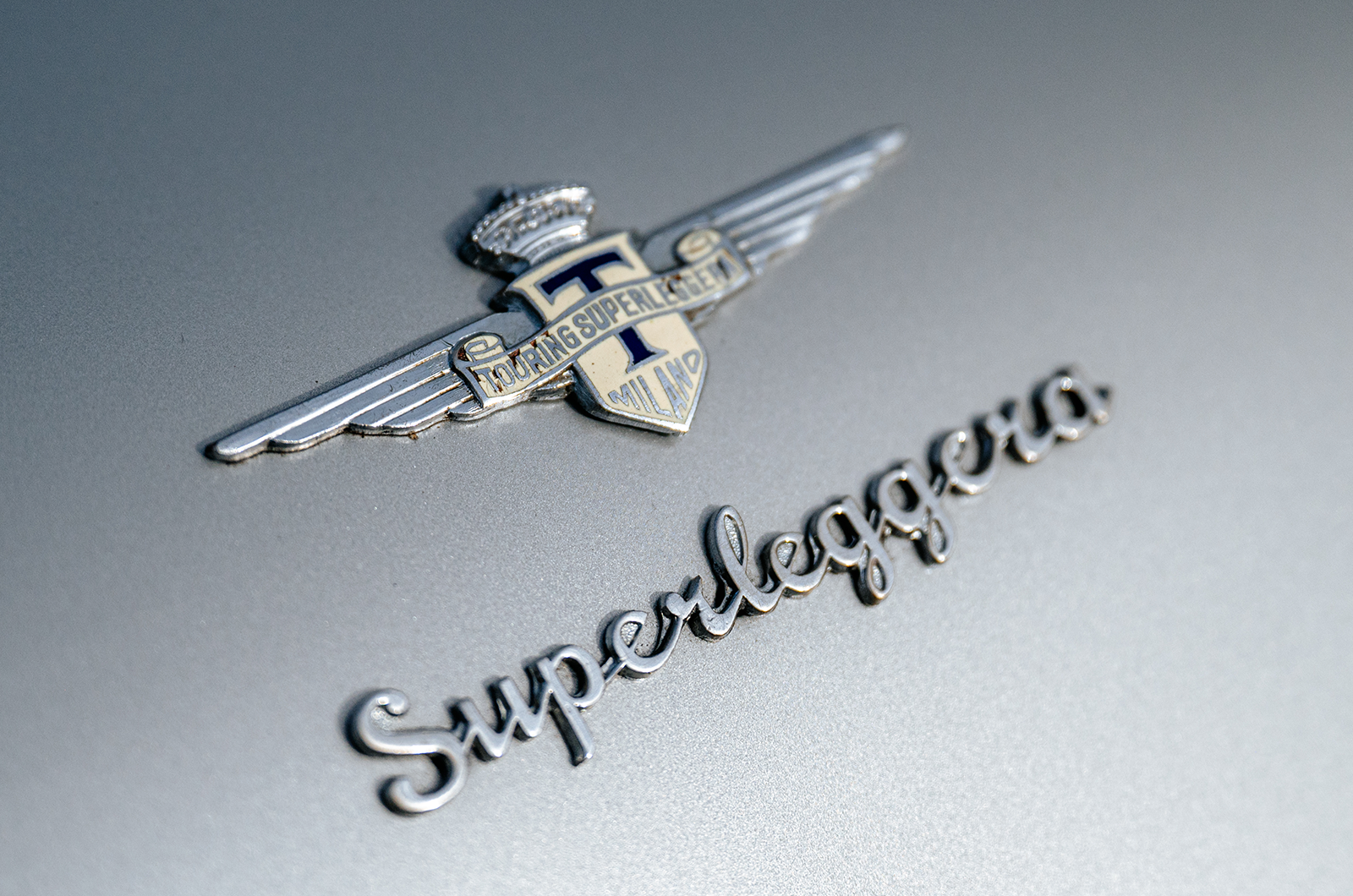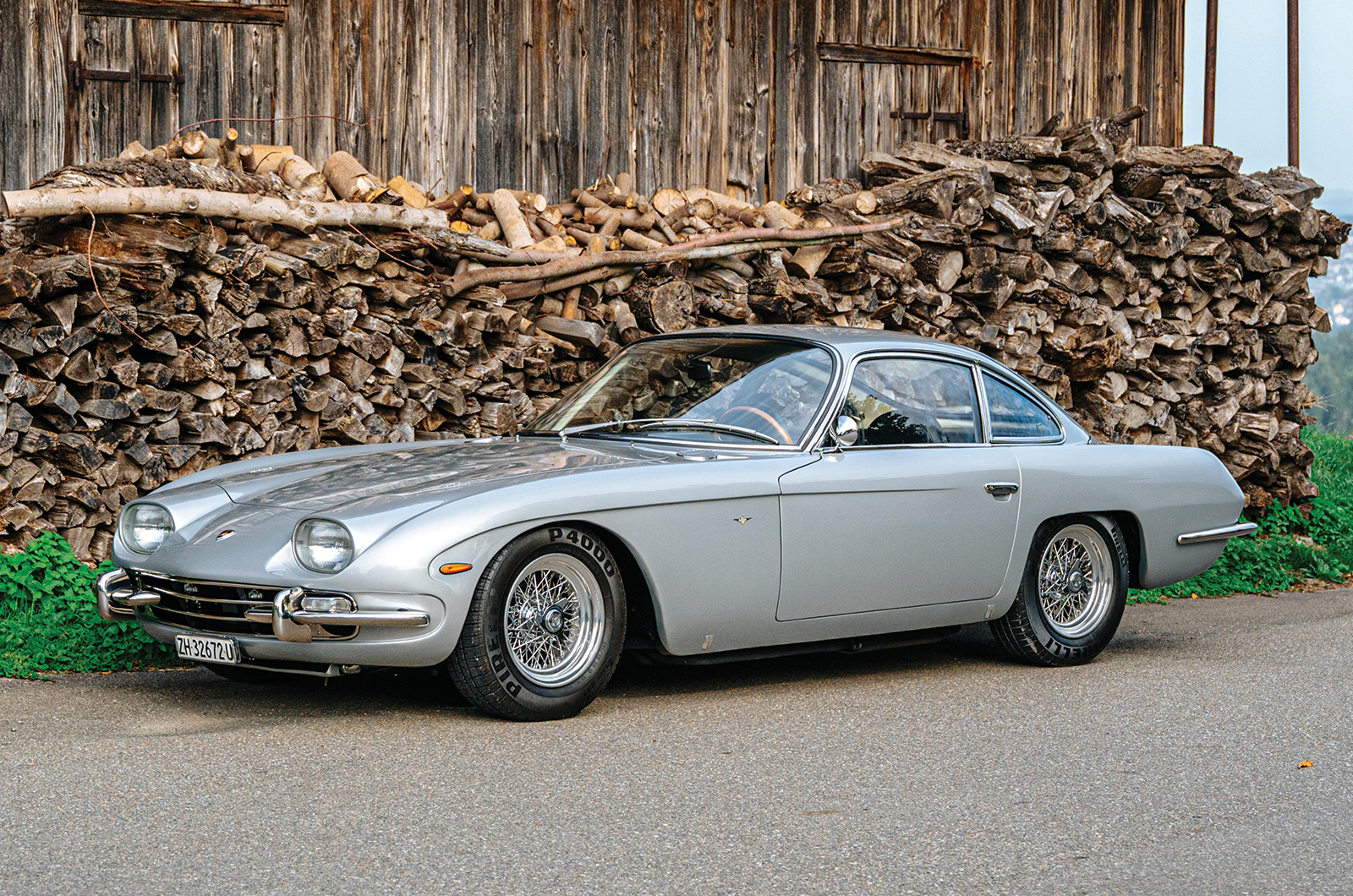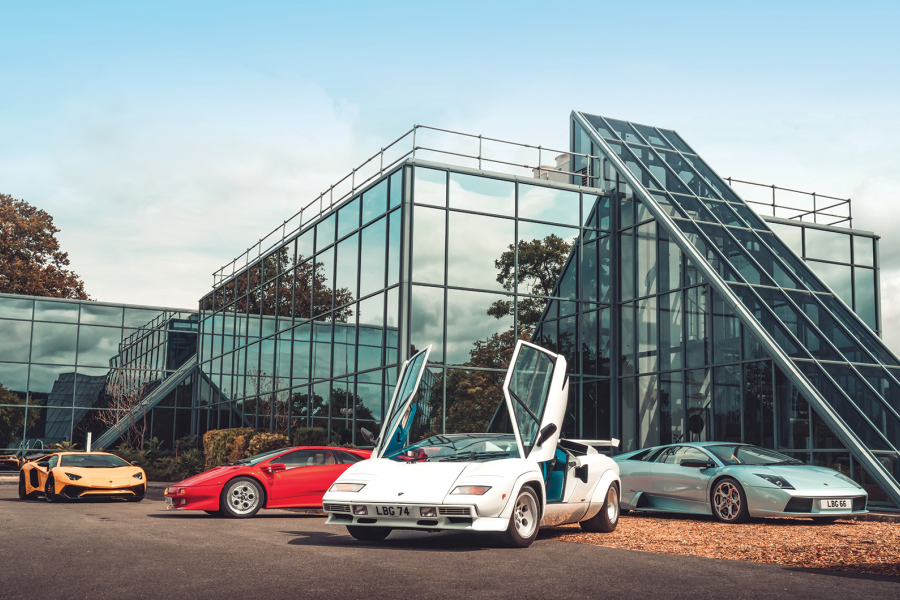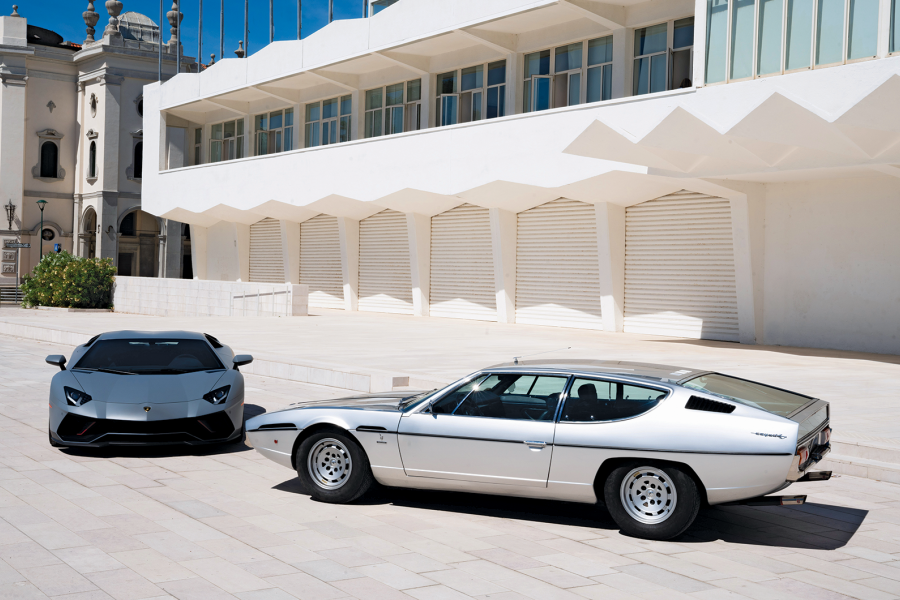It was next accounted for in 1971, as a shabby-looking SFr6000 offering on a local garage forecourt.
The following owner revived the car and kept it for 40 years before the father-and-son team of Koni and Fabian Lutzinger of Lutzinger Classic Cars in Zurich acquired the 350GT and restored it to original condition, at huge expense, for their mouthwatering personal collection.
The Lamborghini 350GT’s rather shallow boot is just enough for European road trips
Settling behind the thin, wooden-rimmed wheel you notice that the top-hinged pedals are off-centre in relation to it, but nicely arranged for fancy heel-and-toe footwork.
You sit quite upright compared to the rake of the panoramic windscreen, forehead at close quarters with the slightly lethal-looking tinted Perspex sunvisors and the almost impossibly slender A-pillars of the floating roof.
With the battery cut-off on the rear bulkhead turned to ‘live’, the starting procedure is standard Italian V12.
Ignition on and the twin Bendix fuel pumps come to energetic life; with the fuel bowls filled – and the throttle pumped three times – the V12 catches on the first try, but needs a couple of minutes to settle down to its clean, gentle 500rpm idle.
The Lamborghini 350GT has ‘Fruit Pastille’ warning lights atop a line of auxiliary dials
On the road it feels like a good half an hour before the oil-temperature gauge starts to register, but the engine is completely tractable, sweet and ready to work with superb low-speed flexibility and broad-shouldered mid-range muscle.
The gearchange doesn’t quite reach the same standards, but only because it is slightly noisy in the lower ratios.
Its movements are light, short and accurate, and nicer than the shift encountered in the later factory-built gearbox, if memory serves.
Its growls a little in bottom gear, but will do almost everything in its 80mph second, with third the ideal ratio for gurgling through suburban traffic.
The ZF gearbox betters Lamborghini’s in-house unit
It’s an odd thing to say, but the near-160mph 350GT is an honest pleasure to drive slowly.
The fantastic vision puts you at ease straight away, and there is nothing jarring or out of register about the feel or response of any of the main controls.
The ride doesn’t smooth out with speed: it is outstanding at both ends of the spectrum, hardly reacting to drain covers or undulations on the well-tended Zurich byways.
‘This 160mph Lamborghini 350GT is an honest pleasure to drive slowly, with nothing jarring or out of register about any of its controls’
I fully expected the 350GT’s unassisted steering to be one of the car’s weak links, but it proves to be one of its many highlights, quickly displacing any suggestion of low-speed ponderousness and slightly low gearing with a light accuracy of response that is almost unique among exotic front-engined GTs of the ’60s.
From the inside you are not aware of any significant roll or dive, just an ability to go quite neutrally around all but the tightest corners, with grip to spare and all the power you need.
The clutch bites fairly high and quite sharply, but has an appropriate amount of heft.
The Lamborghini 350GT sports a quirkily elegant profile, with crisp lines
It is well matched to the weighty but progressive action of the throttle pedal, which gives beautifully harmonised control over a strong, sustained flow of acceleration that just keeps on coming in every gear.
Turbine-like, it has that sensation of endless silken thrust you only really get with a carburetted V12.
As the revs climb the pull gets stronger, the quality of the noises more exquisite but not necessarily louder, and such wind noise as there is fades into the background.
The Lamborghini 400GT replaced the 350GT shortly after Touring of Milan’s demise
The 350GT really starts to make sense at speeds we never approach: what a joy it would be to cruise it at 130mph with acceleration in hand, or urge it along a favourite B-road where its slender dimensions and superb vision make so much more sense than the idiotic supercars of 2024.
Drive a Lamborghini 350GT today and there is a well-rounded competence about it that goes beyond the usual supercar virtues of exciting sounds and spectacular acceleration: it has those qualities in abundance, yet it also gives you every reason to believe it is a nice car to use at any speed and for any purpose.
If that sounds like scant praise, it is not meant to.
Few – if any – exotic-car manufacturers of the 1960s achieved such a perfect balance of desirable qualities. And none of them achieved it straight out of the box.
Images: Jayson Fong
Thanks to: Fabian Lutziger and Lutziger Classic Cars
Factfile
Lamborghini 350GT
- Sold/number built 1964-’67/120
- Construction steel chassis, aluminium panels over tubular steel frame
- Engine all-alloy, dohc-per-bank 3497cc 60° V12, six Weber 40 DCOE carburettors
- Max power 270bhp @ 6500rpm
- Max torque 239Ib ft @ 4000rpm
- Transmission ZF five-speed manual, RWD
- Suspension independent, by unequal-length wishbones, coil springs, telescopic dampers, anti-roll bar f/r
- Steering ZF worm and nut
- Brakes Girling discs, with servo
- Length 14ft 8in (4500mm)
- Width 5ft 3in (1630mm)
- Height 4ft (1220mm)
- Wheelbase 8ft 4½in (2550mm)
- Weight 2315lb (1050kg)
- Mpg 16
- 0-60mph 6.4 secs
- Top speed 156mph
- Price new $13,900
- Price now £400-750,000*
*Prices correct at date of original publication
Enjoy more of the world’s best classic car content every month when you subscribe to C&SC – get our latest deals here
READ MORE
60 years of Lamborghini
Practical performance: Lamborghini Espada vs Maserati Indy vs Ferrari 365GT4 2+2
Aston Martin DB5 vs Mercedes-Benz 300SL vs Ferrari 275GTB: million dollar babies
Martin Buckley
Senior Contributor, Classic & Sports Car
